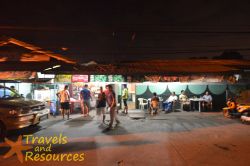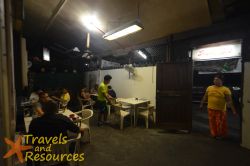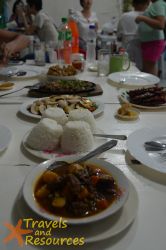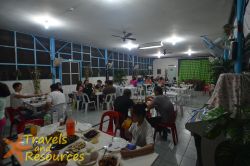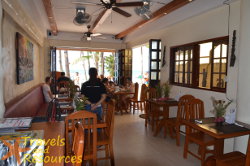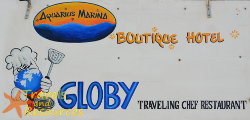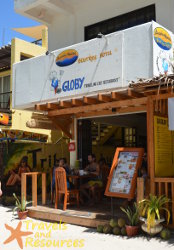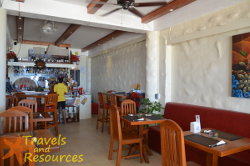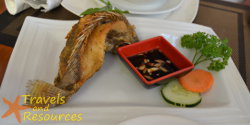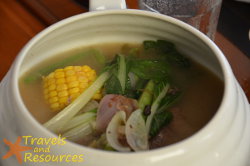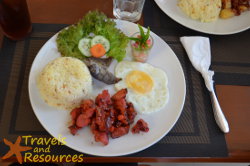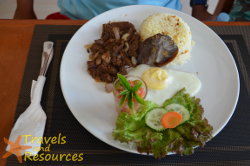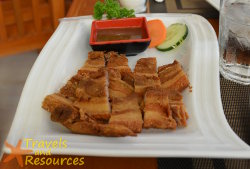Nathaniel’s Bakeshop
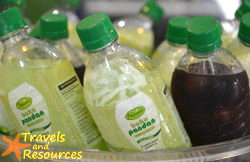
Just like the quest for fire, my search for a tasty, yet reasonably priced, Siomai has been long and arduous. I have climbed the highest mountains and swam the deepest seas only to be disappointed every time.
But just like the accidental discovery of fire, I was surprised to see a tray of tantalizingly tasty treats staring proudly back at me from our dining table. A bunch of them seemed to be daring me to spear one of them with a polished fork, dip them in a platito, or small plate, of Soy Sauce and Calamansi, before popping it in to my mouth.
Other than a silent invitation, there was nothing to indicate, whether a note or a scribble on our white board, that everyone was invited to try a piece.
It was only after everyone arrived home from work that I learned the tray of proud Siomais was a pasalubong, or gift, from a relative who happened to pass through Pampanga.
So with a fork in hand, I took up the dare of these proud little Siomais and savored the tiny pieces as I consumed them.
The experience is best described by the Candy Crush game on my wife’s, iPad Mini – Tasty!
Table of Contents
Directions
After selfishly polishing off the entire tray and leaving nothing for anybody else, I realized my transgression. And to make it up to everyone, I vowed to purchase more for the family members who were not able to sample this tantalizingly tasty treat.
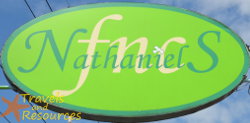
So I contacted my friend Winefredo Rodriguez for assistance. Since he frequents Pampanga, he might know where I could buy more. And sure enough, he was familiar with the place and offered to tag along as I searched for more Siomai.
So I picked him up one fine Saturday morning, headed out to the North Luzon Expressway, or NLEX, towards the direction of Pampanga.
We then got off the San Fernando Exit and turned right to put us on Jose Abad Santos Avenue. Incidentally, if you have trouble finding this avenue on older maps, look for the Olongapo Gapan Road, as this was its old name.
Since Nathaniel’s is on the left side, we continued until the Jose Abad Santos Avenue-McArthur Highway overpass. We made a U-Turn underneath.
Since there are breaks in the center island, it is possible to just turn left at some points on Jose Abad Santos Avenue. However, this main road is a little wide and vehicles travel quickly on it. Seeing big trucks zip by continuously made it an easy decision to just make that U-Turn.
After making the U-Turn, we stayed on the rightmost lane until the green Nathaniel’s sign welcomed us.
Parking
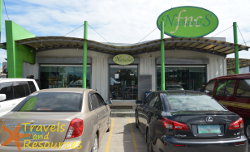
There is parking in the front for about eight vehicles in tow rows of four. There is a security guard manning the front door to keep an eye on the parking area.
If you will be dropping by, I would suggest parking at the back. There is a lot more space and another security guard is available to watch over the area.
The only issue I see with using the rear parking is since it is composed mainly of soil, it may get muddy during the rainy season. So it would be best to take a moment or two to see which parts do not have any puddles of water.
Ambiance
The main structure is composed of white and green. And while it is not a natural brown finish like many other restaurants, the shade of green gives it a bit of a light feel.

The tiled floors were brown and wide. The shiny finish made it easy to clean when food and condiments would accidentally spill down from tables.
Overall, the place was simple and quite clean. In fact, the way it was designed is that it can be cleaned easily.
Frankly, the ambiance had me puzzled for a while. I could not put my finger on it at first, but after walking around, it reminded me of a food court in a mall. Only this one was a bit better.
The temperature was a bit warm because it was a hot day. Noticing our discomfort, the waiter turned on the air conditioner near us and the room gradually cooled down to a more comfortable level.
Dining Area
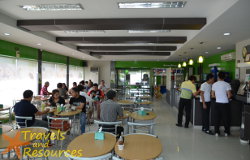
The tables in the dining area were made of round wood supported by an aluminum frame. There was a shelf underneath the table store small bags. The tables were grouped in twos in order to fit four customers at a time.
Since the tables are light, it does not take much effort to join more than one together if people come in large groups.
The chairs were made of light tubular steel and had padded seats. The backrests were metal and did not have any padding so slouching might not be as comfortable as sitting in a sofa.
Counter

For people looking for pasalubong, or snacks to take home to family members, the counter by the front entrance is surrounded with shelves bull of treats. All one has to do is pick up a basket and start filling it up with the packs scattered on the shelves.
There is also a chest and standing freezers with a glass doors that contained things like ice cream, juice, and other cold dishes.
Food
Pampanga is known for it’s good food. Quite a lot of restaurants originating from this province have become popular because of the taste.
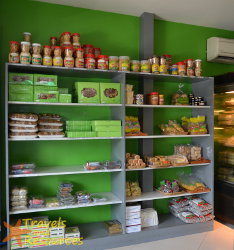
The food that we chose included Fresh Lumpia and, of course, Siomai. Both dishes were good and were reasonably inexpensive. This is probably why the place was packed during lunch.
This branch took credit cards, so we were never in danger of running out of cash.
And in case you where wondering why I would be worried with just Fresh Lumpia and Siomai at the table, well we ended up spending more on the pasalubong than on our lunch.
We got several trays of Siomai, a few bottles of Buko Pandan juice, a pint of Buko Pandan Salad, and an order of Tibuk-tibuk.
As we were paying, I was worried that with the volume food, I’d be pushing the car home because I wouldn’t be able to afford anymore gas. Fortunately, it wasn’t as bad as I had expected when I paid via credit card.
Final Thoughts
Thanks to the extra trays of Siomai, I have redeemed myself in the eyes of my family. With one tray for every two persons, they were satisfying stuffed for dinner that night.
[Yup, I bribed them with Siomai!]
I will admit that before seeing that tray on my dining room table, I was not familiar with Nathaniel’s. But it seems that it is quite popular because they have quite a few branches; they even have a distributor of their products in Japan.
So if you happen to be in the mood for some Siomai or Buko Pandan food, you should be able to find a branch or kiosk near your area.
Till next time, keep your cameras ready, your eyes peeled, and your minds open. You never know where your next adventure will take you!
Must Do’s
- Try the Siomai
- Try the Buko Pandan Juice

